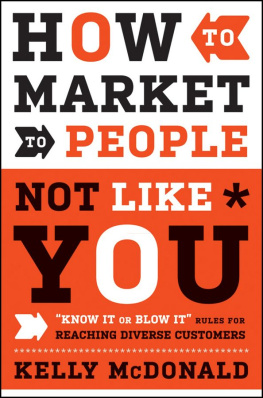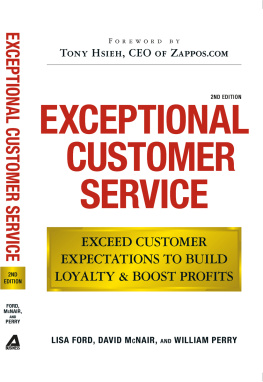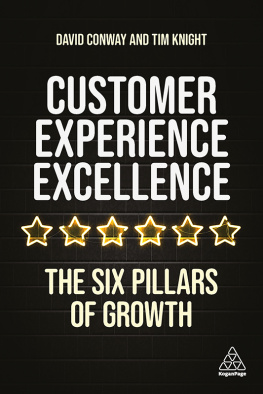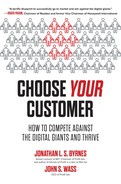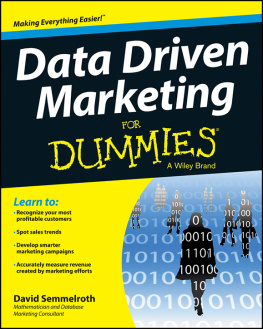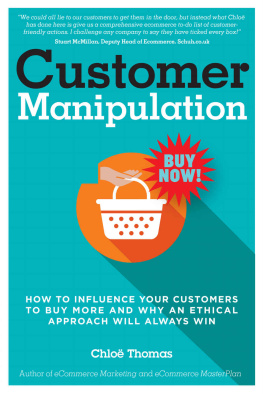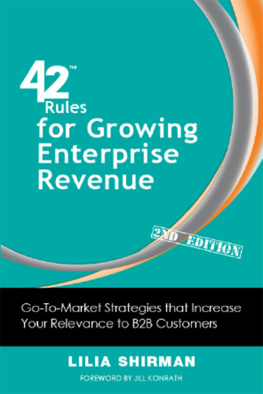To Jennifer Martin, for being a better friend than I thought was possible.
To John, para siempre.
And to Nancy, for taking a chance on me in the first place.
Acknowledgments
There are so many people who helped me with this bookwhether it was with their wisdom, their insights, their support, or their patience. Thank you doesn't really express the depth of my gratitude, but I don't have any other words.
To my editor, Richard Narramore, for his steady, supportive coaching and patience with my endless questions. And for his phone call, which got the whole ball rolling to begin with.
To my readers, those who read and re-read draft after draft and offered their critiques and comments: Melinda Fishman, Jennifer Martin, Dennis DuPont, Melissa Timmerman, Iris Goldfeder, Stuart Gaffney, Karen Eaton, Daniel Eaton, Kim Edwards, Trace Symonds, Traci Thrasher, and John Barry.
To the panelists: Frances Gannon, Nina Kersten, Aimee Valentine, Kim Edwards, Tajana Mesic, Domineice Reese, Kimberly Brandon, Priscilla Anthony, Tiffanie Chiles-Mitchell, Carissa Mavec, Melissa Lewis, Shannelle Mosley, Percy Bryant III, Robert Swafford, Tim Bennett, Todd Young, Joel Benjamin Griffin, Karen Eaton, Melissa Timmerman, Garrett Griffin, and Frank Fardatta.
To Liliana Ramrez, for keeping the company running smoothly and taking care of business while I wrote the book. You did, and do, a fantastic job, always.
To those who contributed with answers, insights, and suggestions: Tim Bennett, Stuart Gaffney, Jos Puente, Jay Baer, and Juli Black.
To those who listened to me rant or whine when I felt stressedprobably everyone I know, but especially John, Melinda, Jennifer, Melissa, and Liliana. Your daily calls, emails, texts, and hugs kept me sane.
And to my clients, for their support, patience, and enthusiasm while the book was being written.
Introduction
You Can't Reach a Customer You Don't Understand
I was in the Dallas airport recently and saw one of the worst ads I've ever seen. It stopped me in my tracks and I found myself studying it, trying to fathom how an ad this awful came to exist. As a marketing professional, I had to wonder, Who created it? And who approved it? The ad was for Cancun, Mexico. The intent was obviously to increase tourism to Cancun by appealing to vacationers. It was an ad featuring a beautiful beach with a woman lying on a massage table, outside, by the ocean, getting a massage. There were starfish and sand dollars strewn around the bottom of the ad. The headline stated: Yes You CanCun.
Aside from the cheesy, stupid, horrible play on words and pun (Yes you can), there was nothing that would entice a reader to choose Cancun over any other beach destination. There was no mention of the culture, the history, or things to do in Cancun. There was simply a picture of a woman getting a massage by the ocean. It could have been an ad for Miami or St. Croix or San Diego. The odd thing is, there are many, many reasons why someone would want to vacation in Cancun: world-class snorkeling and diving, Mayan ruins, five-star hotels and restaurants, fantastic weather, a large English-speaking population, affordabilitythe list goes on. I'm willing to bet that most people planning a vacation to a beach destination are not going to choose their destination because of a generic, bland ad and a corny, cheesy pun with no relevance.
It was kind of sad, too. Poor Cancunif Cancun were a person, he'd feel so misunderstood! Imagine the thoughts Cancun would have: Wow, I have so much to offer! I have rich cultural history; amazing ruins and temples that are thousands of years old; a terrific, mild climate; clear turquoise waters filled with fish and colorful coral; great restaurants and nightlife; and I'm so affordable compared to others! So why is all of this substance overlooked in favor of making a cheesy pun? Doesn't anybody know who I am? Don't the ad makers want to know more about me and really understand me? If they did, and they created an ad that really showcased who I am, their results would be so much better! Because the people who really want what I have would learn about me. And they'd like what they learned. They'd want to come visit me and see for themselves. They'd want to experience me, the real Cancun.
To me, the reason that ad for Cancun was so weak was that whoever created it doesn't seem to know anything about what vacationers want. It didn't communicate effectivelyabout the merits of Cancun or, frankly, anything. There was no substance to that message at all.
To be fair, it's hard to communicate effectively when you don't really understand whom you're talking to or what that person or group cares about. The best marketing messages resonate with their target audience; there is something in the message that taps into a belief, a value, an aspiration, a hope, a fear, or something the target holds dear. This is a simple concept, but it's scary because you don't want to risk offending anyone or making a fool of yourself if you try something new and get it wrong.

